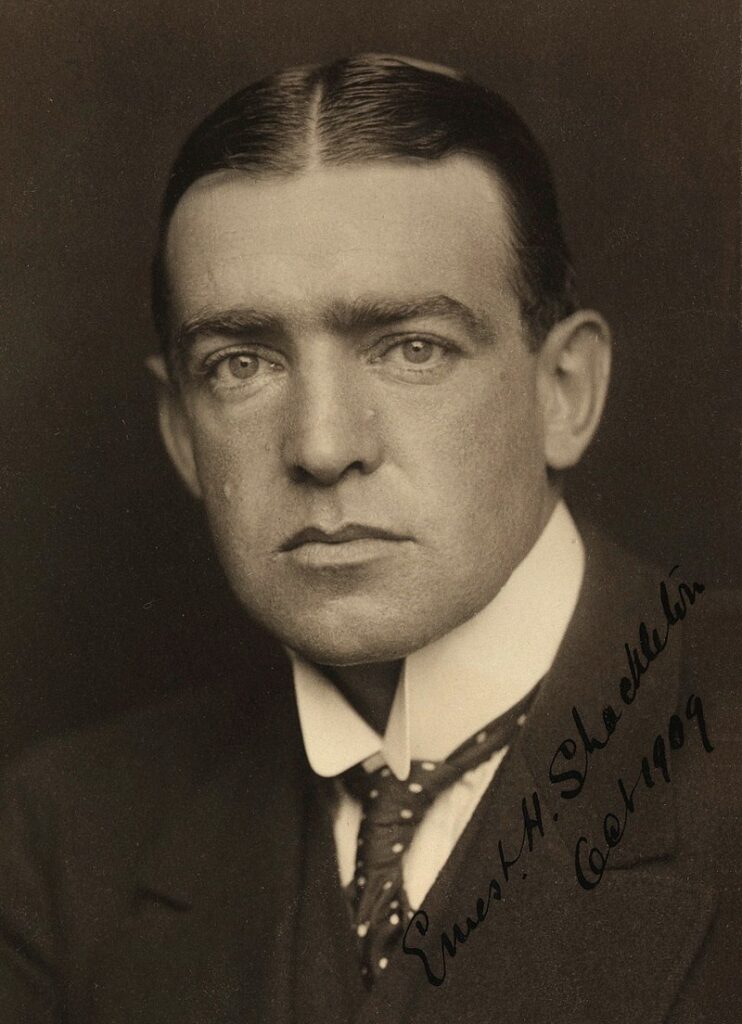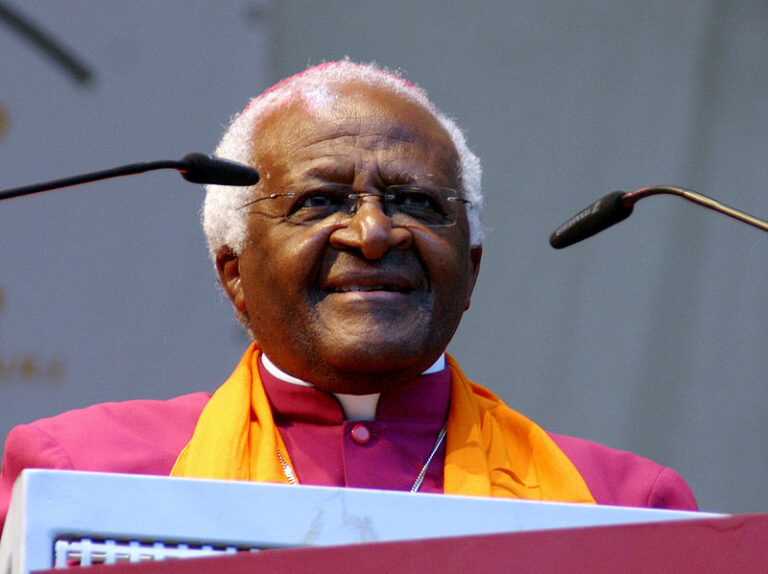Navigating the Frozen Frontier: Leadership Lessons from Shackleton’s Triumph

Courage and Resilience in the Face of Adversity
In the vast frozen expanse of the Antarctic, where survival seemed impossible, one man’s extraordinary leadership and unwavering determination defied all odds. Sir Ernest Shackleton, a name synonymous with courage and resilience, led the ill-fated Imperial Trans-Antarctic Expedition from 1914 to 1917. Though the mission ended in failure, Shackleton’s leadership and the remarkable survival of his crew have become legendary, inspiring leaders across generations.
Importance of studying Shackleton’s leadership style and its relevance today
Leadership, in its true essence, is not merely about reaching the pinnacle of success or achieving personal glory. It is about guiding and empowering a team through the harshest of challenges, demonstrating unwavering resolve, and embodying the qualities that inspire others to achieve greatness. Sir Ernest Shackleton’s story encapsulates the very essence of exceptional leadership. Despite the harsh Antarctic environment, his leadership lessons are as relevant today as they were a century ago.
This comprehensive article delves into the captivating stories and invaluable leadership lessons from the life of Sir Ernest Shackleton. We explore his extraordinary courage, resilience, and ability to inspire and motivate his team, uncovering the timeless principles that can guide leaders in any field or era.
Shackleton’s indomitable spirit serves as a beacon of inspiration, reminding us that true leadership is not defined by successes alone but by how one responds in the face of adversity. His remarkable story provides a treasure trove of insights for leaders navigating the complexities of our modern world.
Background and Context
Brief overview of Shackleton’s life and achievements
Born in County Kildare, Ireland, in 1874, Sir Ernest Shackleton was destined to leave an indelible mark on the world of exploration and leadership. From a young age, Shackleton displayed an adventurous spirit and an insatiable curiosity about the unknown. He joined Captain Robert Falcon Scott’s Discovery Expedition in 1901-1904, where he made a name for himself as an intrepid explorer.
Shackleton’s first attempt at reaching the South Pole came in 1907-1909 during the Nimrod Expedition. While falling short of the pole, Shackleton came within 97 geographical miles, setting a record for the southernmost point reached at that time. This expedition also showcased his leadership abilities, as he prioritized the safety and well-being of his team over personal ambition.
Historical context
The Imperial Trans-Antarctic Expedition (1914-1917): The pinnacle of Shackleton’s polar explorations came with the ambitious Imperial Trans-Antarctic Expedition, also known as the Endurance expedition. The goal was to cross the Antarctic continent from the Weddell Sea to the Ross Sea, a journey spanning approximately 1,800 miles.
In August 1914, Shackleton and his crew set sail aboard the Endurance, a sturdy vessel purpose-built for navigating through icy waters. However, fate had other plans. The ship became trapped in the grip of the Antarctic ice, ultimately leading to its demise. Shackleton’s leadership and the survival of his crew would soon be put to the ultimate test.
Challenges faced by Shackleton and his crew
Stranded on the drifting ice floes of the Weddell Sea, Shackleton and his men faced a relentless series of challenges that pushed the boundaries of human endurance. The ice presented constant threats, crushing their ship and forcing them to abandon it. Left with meager supplies, they were thrust into an unforgiving environment of icy winds, freezing temperatures, and the perpetual darkness of the Antarctic winter.
Shackleton’s leadership was tested not only by the physical hardships but also by the psychological toll it took on the crew. Maintaining morale and unity amidst uncertainty and prolonged isolation became critical factors in their survival. Shackleton had to make difficult decisions, navigate treacherous terrain, and lead his men with a delicate balance of authority and empathy.
Throughout their journey, the crew faced starvation, dehydration, frostbite, and the constant threat of being lost at sea. Yet, against all odds, Shackleton kept the flame of hope alive, inspiring his team with his unwavering resolve and unyielding belief in their eventual rescue.
As we explore Shackleton’s leadership in the face of such extraordinary challenges, we gain valuable insights into the qualities that defined his leadership style. His ability to remain calm under pressure, adapt to changing circumstances, and prioritize the well-being of his team over personal gain became hallmarks of his exceptional leadership.
Through the lens of the Imperial Trans-Antarctic Expedition, we not only witness the physical and emotional trials endured by Shackleton and his crew but also gain a profound appreciation for the enduring principles of leadership that emerged from their extraordinary journey.
Join us as we delve deeper into the heart of Shackleton’s leadership, uncovering the strategies he employed to build a resilient team, make critical decisions, lead by example, communicate effectively, manage crises, and leave a lasting legacy. Shackleton’s leadership lessons serve as a beacon of inspiration, illuminating a path for leaders across industries and generations to follow.
Building a Resilient Team
Shackleton’s meticulous selection process
One of the key factors contributing to Shackleton’s success as a leader was his careful selection of team members. Recognizing the importance of having individuals who could withstand the physical and mental challenges ahead, Shackleton sought out individuals with diverse skill sets, unwavering dedication, and the ability to work well in a team. He handpicked his crew, taking into account their character, experience, and compatibility. This deliberate approach to assembling a resilient team laid the foundation for their survival and success.
Fostering a sense of camaraderie and shared purpose
Shackleton understood the significance of fostering a strong sense of camaraderie and shared purpose among his team. In the harsh and isolating Antarctic environment, it was essential to cultivate a bond that would withstand the trials they would face. Shackleton encouraged a spirit of unity by emphasizing the collective goal of survival and the importance of supporting one another. He fostered an environment where every team member felt valued and understood their role in the overall mission.
Nurturing trust and open communication
Trust formed the bedrock of Shackleton’s leadership approach. He built trust by leading with integrity, displaying competence, and showing genuine concern for the well-being of his team. Shackleton maintained an open-door policy, encouraging his crew members to freely express their ideas, concerns, and fears. By fostering open communication, he created an environment where individuals felt heard, valued, and motivated to contribute their best.
Cultivating a positive team culture
Shackleton recognized the power of a positive team culture in bolstering resilience and morale. Despite the hardships they faced, he maintained an unwavering sense of optimism, radiating confidence that they would overcome the obstacles together. Shackleton celebrated achievements, no matter how small, and used humor and camaraderie to lighten the atmosphere during difficult times. By fostering a positive team culture, he helped his crew find strength in unity and camaraderie.
Shackleton’s approach to building a resilient team teaches us the importance of selecting individuals who possess the necessary skills and mindset to thrive in challenging environments. By cultivating a sense of camaraderie, trust, open communication, and a positive team culture, leaders can inspire their teams to weather storms and triumph over adversity.
As we reflect on Shackleton’s meticulous selection process and his emphasis on fostering unity and trust, we find valuable lessons applicable to any leadership context. Whether leading a small team in a startup or managing a multinational organization, the principles of building a resilient team remain constant. By carefully selecting individuals, fostering shared purpose, nurturing trust, and cultivating a positive team culture, leaders can forge teams that are not only equipped to handle challenges but also thrive in the face of adversity.
Let’s explore Shackleton’s journey and delve deeper into the transformative power of building a resilient team. Through his remarkable example, we uncover strategies and insights that can empower leaders to create teams that stand united, overcome obstacles, and achieve extraordinary results. Shackleton’s legacy reminds us that the strength of a leader lies not only in their individual capabilities but also in their ability to build and nurture resilient teams that can conquer the most formidable challenges.
Adaptability and Decision-Making
Assessing and embracing changing circumstances
Shackleton’s expedition faced numerous unexpected challenges, from the loss of their ship to the relentless drifting ice that forced them to abandon their initial plan. Shackleton’s ability to assess and adapt to changing circumstances was instrumental in their survival. He recognized that clinging to a rigid plan would only lead to disaster and instead embraced a flexible mindset. Shackleton made the difficult decision to set up camp on the drifting ice floes, adapting their strategies to the new reality they faced. This ability to assess and adapt in the face of adversity highlights the importance of flexibility and nimbleness in leadership.
Shackleton’s ability to make quick and effective decisions
Shackleton’s decisive decision-making played a crucial role in their survival. He understood the gravity of each choice he made and the impact it would have on the team’s well-being. Whether it was determining when to abandon the ship or how to allocate limited resources, Shackleton had the ability to make tough decisions swiftly. His clarity of purpose and deep understanding of the risks involved allowed him to act decisively, instilling confidence in his team and ensuring their continued progress.
Balancing risk and caution in extreme environments
In the harsh Antarctic environment, Shackleton faced constant risks. He had to balance the need for progress with the need for caution to ensure the safety of his crew. Shackleton demonstrated an astute judgment of risks, knowing when to push the boundaries and when to exercise restraint. This delicate balance between calculated risk-taking and prudent decision-making is a hallmark of effective leadership. Shackleton’s ability to navigate this balance allowed his team to persevere while minimizing unnecessary risks.
Lessons on flexibility and improvisation
Shackleton’s expedition encountered countless situations that demanded quick thinking and improvisation. With limited resources and no access to outside help, Shackleton and his crew had to find innovative solutions to survive. From repurposing materials to adapting their equipment, they demonstrated resourcefulness in the face of scarcity. Shackleton encouraged a culture of creative problem-solving and embraced the idea that no idea was too unconventional. This flexibility and willingness to improvise are crucial attributes for leaders in today’s fast-paced and unpredictable business landscape.
Shackleton’s ability to adapt to changing circumstances, make decisive decisions, balance risk and caution, and embrace flexibility and improvisation provides valuable insights for leaders facing turbulent and uncertain environments. By cultivating an adaptive mindset, honing decision-making skills, striking a balance between risk and caution, and fostering a culture of innovation, leaders can navigate the ever-evolving challenges with agility and resilience.
As we examine Shackleton’s journey and delve deeper into his adaptability and decision-making prowess, we uncover invaluable lessons applicable to leaders in any domain. The ability to assess and embrace change, make timely and effective decisions, balance risk and caution, and foster a culture of flexibility and improvisation can empower leaders to thrive in the face of uncertainty, inspire their teams, and achieve remarkable outcomes.
Let’s examine Shackleton’s remarkable story and unlock the secrets of adaptability and decision-making in leadership. Through his extraordinary example, we discover how leaders can navigate uncharted territories, overcome obstacles, and seize opportunities with confidence and conviction. Shackleton’s legacy reminds us that adaptability and effective decision-making are essential skills that enable leaders to chart a course to success even in the most challenging and unpredictable circumstances.
Leading by Example
Shackleton’s hands-on approach and dedication to his team
Sir Ernest Shackleton was not a leader who merely delegated tasks from a distance. He led by example, actively engaging in the physical labor and challenges alongside his team. Shackleton’s hands-on approach and tireless dedication to the well-being of his crew earned him their respect and admiration. He shared in their struggles and never asked his team to do something he wouldn’t do himself. This commitment to leading from the front created a deep sense of trust and loyalty within the team.
Displaying unwavering optimism and perseverance
In the face of seemingly insurmountable odds, Shackleton remained an unwavering optimist. He radiated a contagious enthusiasm and belief that they would ultimately prevail. Shackleton’s optimism was not blind; it was grounded in his unyielding determination and perseverance. He never gave up, even when circumstances appeared dire. This relentless spirit became a source of inspiration for his crew, propelling them forward despite the immense challenges they faced.
Managing personal emotions and maintaining composure
Shackleton understood the importance of managing his personal emotions and maintaining composure in front of his team. Despite the immense stress and uncertainty, he projected a calm and composed demeanor. Shackleton recognized that his emotional state would directly impact the morale of his crew. By demonstrating resilience and fortitude, he instilled confidence and stability, reassuring his team that they were in capable hands.
Inspiring through action and sacrifice
Shackleton’s leadership extended beyond words; it was exemplified through his selfless actions and sacrifices. When the situation demanded it, he put the needs of his crew above his own. Whether it was enduring hardships, rationing supplies to ensure everyone’s survival, or embarking on dangerous journeys to seek help, Shackleton’s actions spoke volumes about his commitment to his team. His willingness to put himself in harm’s way demonstrated an extraordinary level of dedication and inspired his crew to push their own limits.
Shackleton’s approach to leadership by example teaches us the power of authenticity, dedication, and perseverance. By actively participating in the challenges faced by the team, maintaining unwavering optimism, managing personal emotions, and demonstrating selfless actions, leaders can forge deep connections with their teams and ignite a shared commitment to achieving success.
As we examine Shackleton’s leadership by example, we gain insights that transcend time and industry. Whether leading a small team or a large organization, the principles of leading from the front, fostering optimism, managing emotions, and inspiring through action remain paramount. Shackleton’s legacy reminds us that true leadership is not defined solely by words, but by the example we set through our own actions.
The profound impact of Shackleton’s leadership by example is apparent. Through his extraordinary story, we discover how leaders can cultivate trust, inspire unwavering dedication, and build resilient teams that persevere through even the most daunting challenges. Shackleton’s legacy serves as a testament to the transformative power of leading from the front and inspiring others to achieve greatness.
Communication and Motivation
Effective communication strategies in challenging conditions
In the extreme and isolating environment of the Antarctic, effective communication was crucial for Shackleton and his team. Shackleton employed various strategies to ensure clear and efficient communication despite the harsh conditions. He established regular team meetings to share updates, discuss challenges, and align objectives. Shackleton also emphasized the importance of active listening, encouraging open dialogue, and creating a safe space for team members to express their thoughts and concerns. By fostering effective communication, Shackleton kept his team informed, engaged, and united.
Harnessing the power of storytelling and shared vision
Shackleton understood the power of storytelling in motivating and inspiring his team. Through vivid and compelling narratives, he painted a vision of their ultimate triumph and the brighter future that lay beyond the challenges they faced. Shackleton’s storytelling created a sense of purpose and connectedness, reminding his crew of their collective mission and the significance of their efforts. By weaving tales of adventure and shared goals, he fueled their motivation and instilled a sense of pride in their work.
Encouraging individual and team motivation
Shackleton recognized the importance of individual and team motivation in driving performance. He took the time to understand the unique strengths and aspirations of each team member, tailoring his approach to inspire and encourage them accordingly. Shackleton celebrated individual achievements, providing recognition and fostering a sense of personal fulfillment. Additionally, he cultivated a team spirit by emphasizing the collective success and creating opportunities for collaboration and shared achievements. By nurturing both individual and team motivation, Shackleton ensured that each member felt valued and invested in the team’s success.
Keeping morale high during times of adversity
Shackleton’s leadership was instrumental in maintaining high morale among his crew, even in the face of immense adversity. He recognized that morale was a critical factor in their ability to persevere and remain focused on their goals. Shackleton organized activities to lift spirits, such as games, music, and performances. He encouraged camaraderie, ensuring that bonds of friendship and support were strengthened throughout their journey. By fostering a positive and uplifting atmosphere, Shackleton buoyed morale, creating a resilient team that could withstand the most challenging circumstances.
Shackleton’s approach to communication and motivation highlights the importance of effective and empathetic leadership in fostering a cohesive and motivated team. By employing strategies such as clear communication, storytelling, shared vision, individual recognition, and morale-boosting activities, leaders can create an environment where team members feel connected, inspired, and driven to achieve their collective objectives.
As we delve into Shackleton’s mastery of communication and motivation, we uncover lessons that resonate across industries and leadership roles. Whether leading a small team or a large organization, the ability to communicate effectively, harness the power of storytelling, nurture motivation, and maintain high morale are essential skills for success. Shackleton’s legacy reminds us that a leader’s words and actions have the power to shape the mindset and motivation of their team.
The profound impact of Shackleton’s communication and motivation strategies is evident. Through his remarkable story, we discover how leaders can inspire, connect, and empower their teams to overcome obstacles and achieve greatness. Shackleton’s legacy serves as a testament to the transformative power of effective communication and motivation in building resilient and high-performing teams.
Crisis Management and Emotional Intelligence
Shackleton’s crisis management skills and decision-making under pressure
The Antarctic expedition presented Shackleton with a series of crises that demanded astute crisis management and decision-making skills. From the initial entrapment of the Endurance to the subsequent challenges of survival, Shackleton remained composed and level-headed in the face of adversity. He approached each crisis with a methodical mindset, carefully assessing the options, gathering input from his team, and making calculated decisions. Shackleton’s ability to navigate crises with resilience and sound judgment played a pivotal role in the ultimate survival of his crew.
Emotional intelligence in maintaining team morale
Shackleton’s exceptional emotional intelligence was a key factor in maintaining team morale throughout their ordeal. He recognized the impact of his emotions on the crew and made a conscious effort to manage his own emotional state. Shackleton remained a source of strength and stability for his team, providing reassurance and instilling confidence. He empathized with the fears and concerns of his crew, offering support and understanding. By demonstrating emotional intelligence, Shackleton created a safe and supportive environment where individuals felt seen, heard, and valued.
Dealing with conflict and resolving interpersonal issues
Shackleton’s leadership was tested not only by external challenges but also by interpersonal conflicts within the team. He understood that unresolved conflicts could fracture the unity and cohesion necessary for survival. Shackleton proactively addressed conflicts, promoting open and honest communication among team members. He encouraged individuals to express their grievances, facilitating respectful dialogue and finding resolutions that satisfied everyone involved. Shackleton’s ability to manage conflicts and foster harmony within the team was critical to maintaining a strong collective spirit.
Lessons on resilience and managing setbacks
Shackleton’s leadership during setbacks exemplified his resilience and unwavering determination. When faced with setbacks, he did not allow himself or his team to dwell on failure or succumb to despair. Instead, Shackleton reframed setbacks as opportunities for growth and adaptation. He communicated a message of hope and resilience, encouraging his crew to persevere and find solutions in the face of adversity. Shackleton’s unwavering optimism and ability to bounce back from setbacks inspired his team to do the same, fostering a culture of resilience and fortitude.
Shackleton’s crisis management skills and emotional intelligence provide profound insights into effective leadership during challenging times. By honing crisis management abilities, making sound decisions under pressure, nurturing emotional intelligence, and resolving conflicts with empathy, leaders can navigate crises with grace and empower their teams to weather storms.
As we explore Shackleton’s mastery of crisis management and emotional intelligence, we recognize the universal applicability of these lessons. In any field or industry, leaders will inevitably encounter crises and conflicts. By embracing the principles of crisis management, emotional intelligence, and resilience, leaders can guide their teams through even the most trying circumstances.
Shackleton’s legacy reminds us that true leadership shines brightest in times of crisis, demonstrating the transformative power of resilience and emotional intelligence in the face of challenges.
Legacy and Relevance Today
Impact of Shackleton’s leadership style on subsequent generations
Sir Ernest Shackleton’s leadership style and his remarkable Antarctic expedition left an indelible mark on subsequent generations of leaders. His story continues to captivate and inspire, serving as a testament to the extraordinary feats that can be accomplished through effective leadership. Shackleton’s ability to navigate crises, build resilient teams, and foster unwavering determination has become a source of inspiration for leaders across industries.
Applications of Shackleton’s lessons in modern leadership development
The leadership lessons derived from Shackleton’s journey hold significant relevance in today’s dynamic and challenging business landscape. Shackleton’s emphasis on adaptability, decision-making under pressure, leading by example, effective communication, motivation, crisis management, and emotional intelligence resonate with leaders seeking to excel in a rapidly evolving world. His example serves as a guiding light for modern leaders who must navigate complex and unpredictable environments.
Examples of contemporary leaders embodying Shackleton’s qualities
The legacy of Shackleton’s leadership can be seen in the actions and approaches of contemporary leaders. Many leaders today draw inspiration from Shackleton’s ability to forge resilient teams, make tough decisions, and maintain unwavering optimism. They embody his qualities of adaptability, courage, and empathy. Examples abound of leaders who prioritize their teams’ well-being, foster open communication, and lead by example, inspired by Shackleton’s enduring legacy.
Final thoughts on the enduring value of Shackleton’s leadership lessons
Sir Ernest Shackleton’s leadership lessons transcend time and space, offering timeless wisdom to leaders of all eras. His legacy serves as a reminder that leadership is not confined to specific circumstances but is a universal skill applicable in any endeavor. Shackleton’s journey teaches us that leadership is not only about achieving goals but also about the impact we have on individuals, fostering resilience, and inspiring greatness in others.
The enduring value of Shackleton’s leadership lessons lies in their adaptability and universality. They provide a compass for leaders seeking to navigate the complexities of the modern world. By embracing the principles of Shackleton’s leadership—building resilient teams, making sound decisions, leading with empathy, and nurturing a culture of perseverance—leaders can navigate uncharted territories, inspire their teams, and overcome the greatest of challenges.
As we reflect on Shackleton’s legacy and the lessons he imparted, we are reminded of the extraordinary power of leadership to shape individuals, organizations, and even the course of history. The stories and principles derived from Shackleton’s journey continue to illuminate the path for leaders today, guiding them towards greatness and fostering a legacy of courage, resilience, and unwavering determination.
Shackleton’s legacy reminds us that leadership is not just a title, but a transformative force that can shape the world and leave an enduring legacy of excellence.
Embrace Shackleton’s Legacy: Igniting the Leader Within
Throughout this comprehensive exploration of Sir Ernest Shackleton’s leadership lessons and stories, we have delved into the extraordinary qualities that made him a legendary leader. From his meticulous selection process and the building of a resilient team to his adaptability, decision-making under pressure, and leading by example, Shackleton’s leadership style has provided invaluable insights for leaders across generations. We have examined the power of effective communication, motivation, crisis management, and emotional intelligence in Shackleton’s journey. Furthermore, we have explored the enduring legacy of his leadership and its relevance in today’s ever-changing world.
Timeless relevance of Shackleton’s leadership lessons
Shackleton’s leadership lessons stand the test of time, transcending the boundaries of his era and remaining relevant in the modern context. The principles derived from his journey are enduring, reminding us of the core qualities and strategies that define exceptional leadership. Shackleton’s emphasis on adaptability, resilience, empathy, and unwavering determination serves as a guiding light for leaders seeking to navigate complex and unpredictable environments.
As we conclude this exploration of Sir Ernest Shackleton’s leadership lessons, I invite you, the reader, to reflect on the profound impact of his story and the insights it offers. Consider how his principles of leadership—building resilient teams, making sound decisions, leading by example, effective communication, motivation, crisis management, and emotional intelligence—can be applied in your own leadership journey. Embrace the challenges that come your way, drawing inspiration from Shackleton’s unwavering resolve, and commit to developing your leadership abilities.
Leadership is a continuous journey of growth and self-discovery. By integrating the lessons of Shackleton’s exceptional leadership into your own approach, you have the opportunity to inspire greatness, foster resilience, and leave a lasting legacy of impact. Embrace the spirit of Shackleton, embodying courage, adaptability, and empathy as you navigate the uncharted territories of leadership.
The lessons and stories of Sir Ernest Shackleton serve as a timeless reminder that exceptional leadership is not confined to the realms of exploration and adventure. It is a force that has the power to transform individuals, teams, and organizations. By embracing the qualities exemplified by Shackleton, you have the potential to create a lasting impact, inspire those around you, and navigate the most challenging of circumstances with grace and fortitude.
So, let us embark on our own leadership journeys, drawing inspiration from the extraordinary leadership lessons and stories of Sir Ernest Shackleton. As we navigate the uncharted territories of leadership, let us carry the torch of courage, resilience, and unwavering determination, illuminating the path for those who follow. Together, we can shape a future where exceptional leadership becomes the hallmark of success, and where the lessons of Shackleton’s remarkable journey continue to guide and inspire leaders for generations to come.





